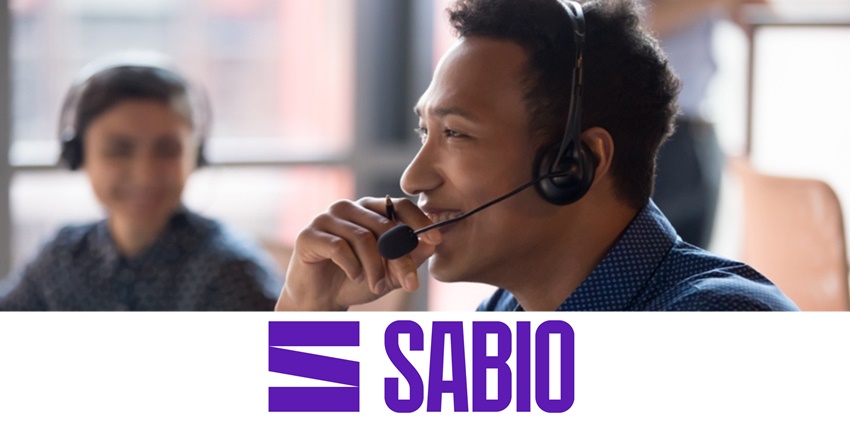
The pandemic has unveiled many hidden societal, structural, and organisational flaws. For example, in times of crisis, some organisations have been focusing on short-term profit at the expense of their people. To keep customers coming back, businesses are looking to expand their offering, increase productivity, and implement automation – but rarely do they opt for investing in their human workforce. The repercussions of such approaches are now becoming obvious – drained, unhappy advisors within their contact centres, poor CX and stunted business growth.
Many organisations fail to notice the impact that employee experience and especially employee mental health have on customer experience. It’s not rare that businesses see their growth skyrocket shortly after implementing a people-first approach. Providing contact centre advisors with more than just the right technology to do their job can create better results than supervisors might think. To uncover the reasons for adopting a people-first approach and why mental health is a big deal in the contact centre, CX Today welcomes James Hughes, Group Head of Solutions at Sabio Group, the digital customer experience (CX) transformation specialist.
People-first or customer-first: Is there a difference?
When companies first hear about a people-first approach they might ask themselves: why? Whether it’s due to the complexity of the approach or the fact that people sometimes require a full-scale initiative to see the difference in their job, Hughes tells why everyone should at least consider it. He begins: “When you look at the attrition of service advisors across the contact centre industry, an average contact centre loses about 20% of its agents every single year. Regardless of industries, all organisations can suffer when they don’t put their people first.”
Service advisors who are unhappy due to burnout or stress are probably not going to provide a great customer experience for any customer. This reflects in poor customer interactions that lead to all kinds of low metrics and can change the trajectory of the business.
Hughes continues: “I really think in the competitive market that we’re in right now, organisations can’t afford to lose customers and they certainly can’t afford to lose their best people. I don’t think there’s ever been a time in the contact centre industry where those two things have been so important.”
By putting themselves into a service advisors role, supervisors could see that they have to deal with scrutiny every day. Feeling demoralised, service advisors are measured based on many different metrics, their desktop environment is usually clunky and hard to navigate, they have to swap screens or use the tools that they haven’t been trained for. To solve those things, Hughes says organisations first need to understand data. “I think the basis of a good desktop strategy is to make it simple and provide the right tools and capabilities so service advisors can do a great job. Organisations need to first run a data gathering to understand what it is they need to execute on.”
All ears on the voice of the employee
While the majority of organisations go into heavy detail with the voice of the customer, they might be missing out on a significant amount of data that turns out to be crucial for business by not listening to their employees.
Hughes begins: “Who in a contact centre spends the most time with customers? Who uses the tools more than anybody else? The answer to both of those questions and many more is the service advisors. I believe advisors are the best source of data. Listening and spending time with them is essential, and that does not need to be a tough task. An employee survey can do more than half of the job.”
Organisations could learn so much about advisors’ barriers, their opinions on different interaction channels, such as chat, email or voice calls. The voice of the employee can reveal what tools and capabilities they need to do their job properly. Most importantly, organisations could find out what it is that’s holding them back.
Hughes says: “One of the biggest challenges I see is team leaders, managers and executives making assumptions on what they think is required, rather than asking people. I think a strategy based on assumptions is a really bad idea.”
Several factors influence the outcome of customer interactions. If service advisors have to deal with difficulties every day, not only will their business performance decrease but their mental health can suffer to the point of them resigning after a short period. Adding COVID, remote working, and a feeling of isolation to the already exhausting role, the advisors often find themselves lost.
Hughes says: “I’d say the role of a service advisor is one of the most challenging roles in any industry and that’s been prevalent in the contact centre industry for many years.
“With COVID, and especially with remote working, all of the problems that service advisors face have been exacerbated even further. To combat this, a lot of organisations have adopted a hyper-automation, self-service kind of strategy which is brilliant in its own right, but it does take away the simple tasks that would normally break up an advisors daily routine.”
By taking away all the simple repetitive tasks, advisors are left with handling only complex, emotional and urgent interactions that require a lot more energy. Without proper training and without enough time to recollect their thoughts between calls, advisors will quickly become fed up with their job.
“It’s interesting to see that the average handling time increases following self-service and automation initiatives. What follows is advisors are feeling overwhelmed, they burnout and eventually quit. My fear is that the issues of mental health and stress are just going to get worse unless we do something about it”, explains Hughes.
Maximising return on investment in people
One of the key steps in deciding on a new business approach is calculating its return on investment. With the people-first approach, the return on investment is a bit different and Hughes explains why:
“The return on investment in terms of cost is massive. That’s an important thing. However, that’s certainly not the thing that I want to talk to the market about as the only goal.”
The real return on investment is people. You can keep advisors in their role, train them, look after them, and see customer experience improving. With improved CX comes brand loyalty and all great things that organisations want.
Hughes says a typical contact centre with 20% attrition spends more than a million pounds every year just to replace advisors who have quit their role. With these expenses, organisations are at a standstill, constantly firefighting, retraining people and sometimes putting them into skill groups that they might not be properly trained to be in. This can be hugely demoralising for the advisor.
Hughes illustrates with a great example: “One global company, that has been named the number one company to work for, does not spend millions a year trying to replace people that they’ve lost because they look after the people they’ve already got, which is ultimately driving brilliant customer experiences.”
Companies that choose to put their people first are more likely to offer first-class experiences because their goal goes far beyond just financial reward. Creating a people-orientated culture provides longevity and a place where people feel more connected to the intended outcomes. Caring for the mental health and well-being of their employees and preventing service advisors from leaving can pay off immensely in the long term.
Hughes concludes: “People come first. Then you make the technology work brilliantly for the people. We at Sabio talk about the technology of course, but we really focus on how it impacts people; both employees and customers.”
Find out how the role of the service advisor has changed in this ebook.







